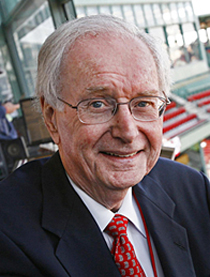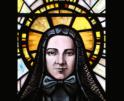
Culture
Perhaps the most famous tale of Jolley's incompetence in the field was of his letting a single go through his legs and bounce off the wall for an error; when he turned to play the carom, the ball went through his legs coming back the other way for a second error. Finally, in an attempt to catch the runner going into third base, he threw wildly into the stands for a total of three errors on one play.

Flavin
If Smead Jolley were around today, he'd probably be a very famous ballplayer with a contract worth tens of millions of dollars. Alas for him, that wasn't the case at all; his career in the major leagues lasted only four seasons.
Jolley was an outfielder for the White Sox and then the Red Sox back in the early 1930s, four decades before the Designated Hitter Rule came into existence. He was a terrific hitter who would have been an excellent DH. Unfortunately for him, he was also one of the most inept outfielders in baseball history. Every fly ball hit his way was an adventure -- and a dangerous one at that -- for him and his team. When he was with the Red Sox, Duffy's Cliff, a 10-foot incline at the base of Fenway Park's left-field wall, was still in existence. His manager told him that, on fly balls to left, all he had to do was simply run up the hill to the base of the wall and make the catch. On one occasion, a fly was hit to left and Jolley dutifully ran up the hill to get it, but the wind was blowing in that day and the ball was held up in it; Jolley, trying to reverse course, fell and came skidding down "the cliff" face first as the ball fell in for a hit. Jolley's excuse was that the manager had taught him to run up the hill but never said anything about running back down.
On another occasion, at Washington's Griffith Park, one day he managed to misplay a routine fly ball by Heinie Manush into an inside-the-park home run.
He was a big guy, 6 feet 3 and 210 pounds, with a happy-go-lucky personality, and he cheerfully owned up to his defensive shortcomings (they were hard to ignore).
Perhaps the most famous tale of Jolley's incompetence in the field was of his letting a single go through his legs and bounce off the wall for an error; when he turned to play the carom, the ball went through his legs coming back the other way for a second error. Finally, in an attempt to catch the runner going into third base, he threw wildly into the stands for a total of three errors on one play. Like most stories that sound too good to be true, that's what this one turned out to be; too good to be true. Baseball historian Bill Nowlin combed through the records of every game Jolley ever played in the majors and couldn't find one in which Jolley was charged with more than a single error in a game, much less on the same play. But he was klutzy enough that everyone believed the story.
When it was reported that a fly ball had conked him on the head, Jolley insisted that story, too, was inaccurate. It had missed his head and conked him on the shoulder, he said.
Finally, when he was with the White Sox, an attempt was made to convert him from an outfielder to a catcher. He turned out to be pretty good, too. He could handle pitchers and had a strong throwing arm that kept base runners in check. There was just one problem: pop flies. Whenever one was hit behind or just in front of the plate, Jolley would get all tangled up in his catcher's gear then stagger around helplessly until the ball dropped somewhere other than where he was standing. The White Sox eventually decided to take their chances on him in the outfield. Boston reached the same conclusion.
The White Sox and the Red Sox both put up with his fielding lapses because he could hit -- really hit, and with decent power. In his four years in the big leagues he batted .305 and hit 46 homers. In 16 minor-league seasons, 10 of which were in the Pacific Coast League, he batted .367. In 1953, he was inducted into the Pacific Coast League Hall of Fame.
The number that he wore while playing for the Red Sox has been retired and hangs on the façade of Fenway Park's right field grandstand. That's because it was also worn later by a kid from Herbert Hoover High School in San Diego whose name happened to be Ted Williams. Jolley was one of a handful of players who wore number nine before it was issued to Williams in 1939, his rookie year. The Red Sox had no numbers on their uniforms until the 1931 season.
Jolley's predecessor wearing number nine was Charlie Berry, a second-string catcher for whom Jolley was traded to Chicago and who went on to prominence as a major-league umpire for 20 years and as an official in the National Football League. In 1958, Berry umpired in the World Series and was also the head linesman in the NFL championship game that year (the Super Bowl hadn't been invented yet). He is the only man to have officiated at both events in the same year.
In 1937, number nine was assigned to a rookie second baseman, Bobby Doerr. It was not until his second year that Doerr was issued number one. I once stumped Ted Williams himself by asking him, "What two members of the Hall of Fame wore number nine for the Red Sox?" Ted was sure that he was the only one until I asked Bobby to tell him what number he wore as a rookie. When Bobby said, "Number nine," the air turned blue. Ted didn't like to lose at anything -- even trivia.
Once number nine was given to Williams in his first year, it was his and his alone, right? Not quite. When Ted was away in the service in 1944, number nine was assigned to Johnny Peacock, a reserve catcher; but Peacock didn't get to wear it very long. After only four-plate appearances in '44, none of which resulted in hits, he was traded to the Philadelphia Phillies, and number nine would never appear on the back of any Red Sox player other than Ted Williams again.
I realize that this is all very trivial stuff, but in case it ever comes up in a conversation, you'll be ready.
- Dick Flavin is a New York Times bestselling author; the Boston Red Sox "Poet Laureate" and The Pilot's recently minted Sports' columnist.
Recent articles in the Culture & Events section
-
Scripture Reflection for April 14, 2024, Third Sunday of EasterDeacon Greg Kandra
-
St. Helena's House is established in the South EndThomas Lester
-
Is this synodality?Russell Shaw
-
Poking the hornet's nest of IVFFather Tadeusz Pacholczyk
-
A eucharistic word: MissionMichael R. Heinlein


















